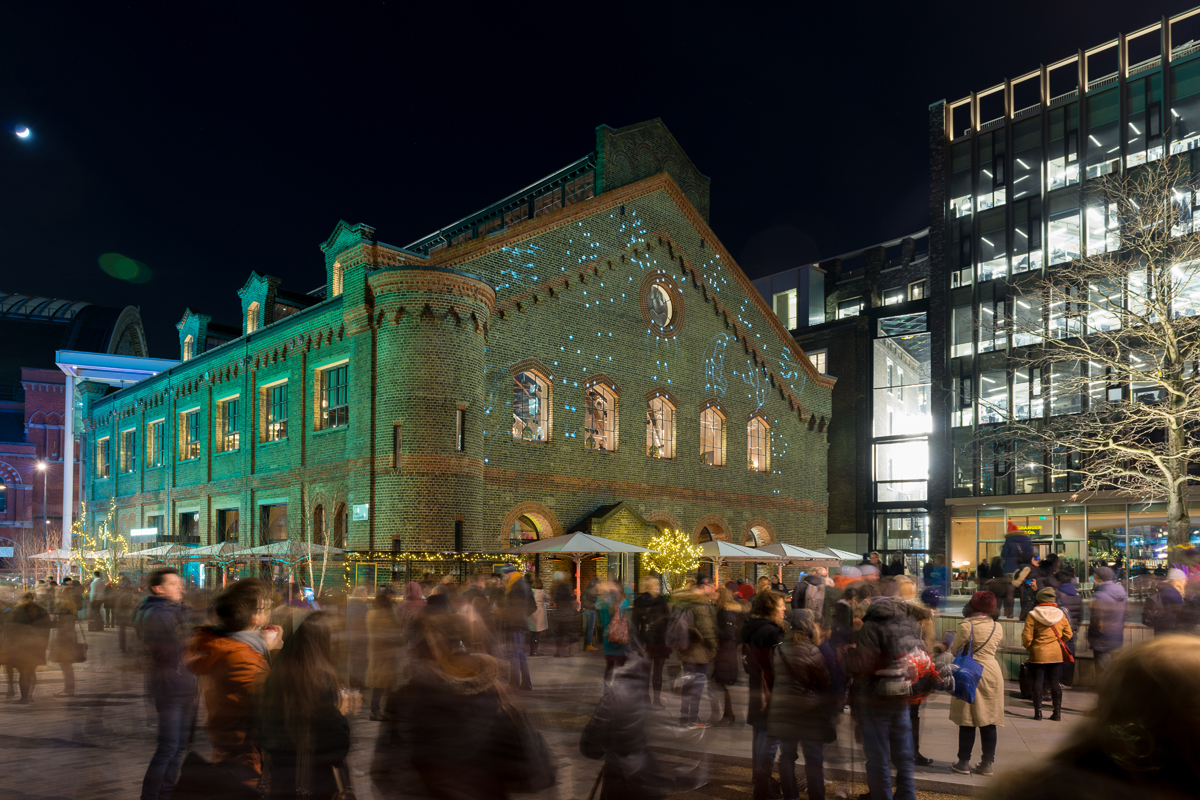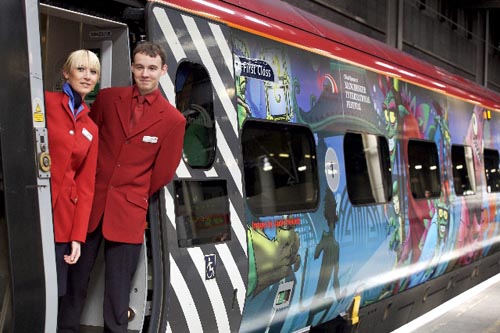“Joining the Dots” at Lumiere, London
An intriguing artwork projected onto the façade of a King’s Cross building for the new light festival


Old mining town Durham, in northeast England, may perhaps best be known for its university and for the light festival that the city plays host to every other year. The festival, called Lumiere, is produced by Artichoke, an organization that specializes in producing spectacular art events in public spaces. Following its success in the north, Lumiere is now launching in London—for the first time. And while quite a few of the pieces have been exhibited before, there are some new favorites to be found.
One of the works that was commissioned especially for the festival is Cleary Connolly’s “Joining the Dots.” The artwork is projected onto the façade of the German Gymnasium restaurant in London’s King’s Cross, and features human silhouettes created by using just 13 dots. It’s inspired by psychophysicist Gunnar Johansson, who did research on how the mind perceives the human body in motion, based on only minimal stimuli. Fittingly, the German Gymnasium was the first purpose-built gym in England, so the space has a long history of movement. Cleary Connolly worked with kids from local schools to create the moving silhouettes. We spoke to Anne Cleary of the Paris-based duo (the only Irish artists to have had a solo exhibition at the iconic Centre Pompidou) about their piece.

Was there a brief for Lumiere, or could you create anything?
There was no brief. We’d had the idea for the piece for some time after working with visual perception researchers, and had done a sketch of the idea before. Then Dennis (Connolly) met Artichoke co-founder Helen Marriage in Durham last year, and she liked it and we were looking to create the project, so it got commissioned for the London Lumiere.
Why did you think “Joining The Dots” would suit the Gymnasium? Did the space inspire the movements the kids made?
Yes it did. We had a team of choreographers and dancers who worked on gymnasium movements. We did small sketches of the Gymnasium space and kids from two schools in the area vaulted and jumped over them, treating the façade itself like a gymnasium. The actual projections are made using some extremely powerful projectors—there are only eight in the UK.

What is it about working with psychologists that appeals to you?
We’ve done it for eight to 10 years, because we were always interested in the idea of looking. In 2009 we did a show at Pompidou in Paris, and met professors from the Paris Descartes University vision lab. They thought our work connected with their research, and we became good friends. Dennis and I went to the lab often and got very involved with the questions of visual perception. And scientists are very generous with their knowledge.
What reaction do you hope “Joining the Dots” will get?
I think people should connect strongly with it. It’s a bit mysterious, and almost looks like these constellations that come to life. The end result is fascinating and funny, and I hope that “Joining The Dots” will also inspire people to investigate the idea behind it. Our minds can deduce a lot of info from just these moving points, and at a certain point when they move, they start to look 3D—you get a sense of volume and can see if the person moving is young or old, for example. Gunnar Johansson was really interested in how we perceive human figures in motion. It comes down to how we respond to danger—these glimpses allow survival.
Lumiere London is on across 30 locations from 6.30PM to 10.30PM, now through 17 January 2016.
Images courtesy of Cleary Connolly












